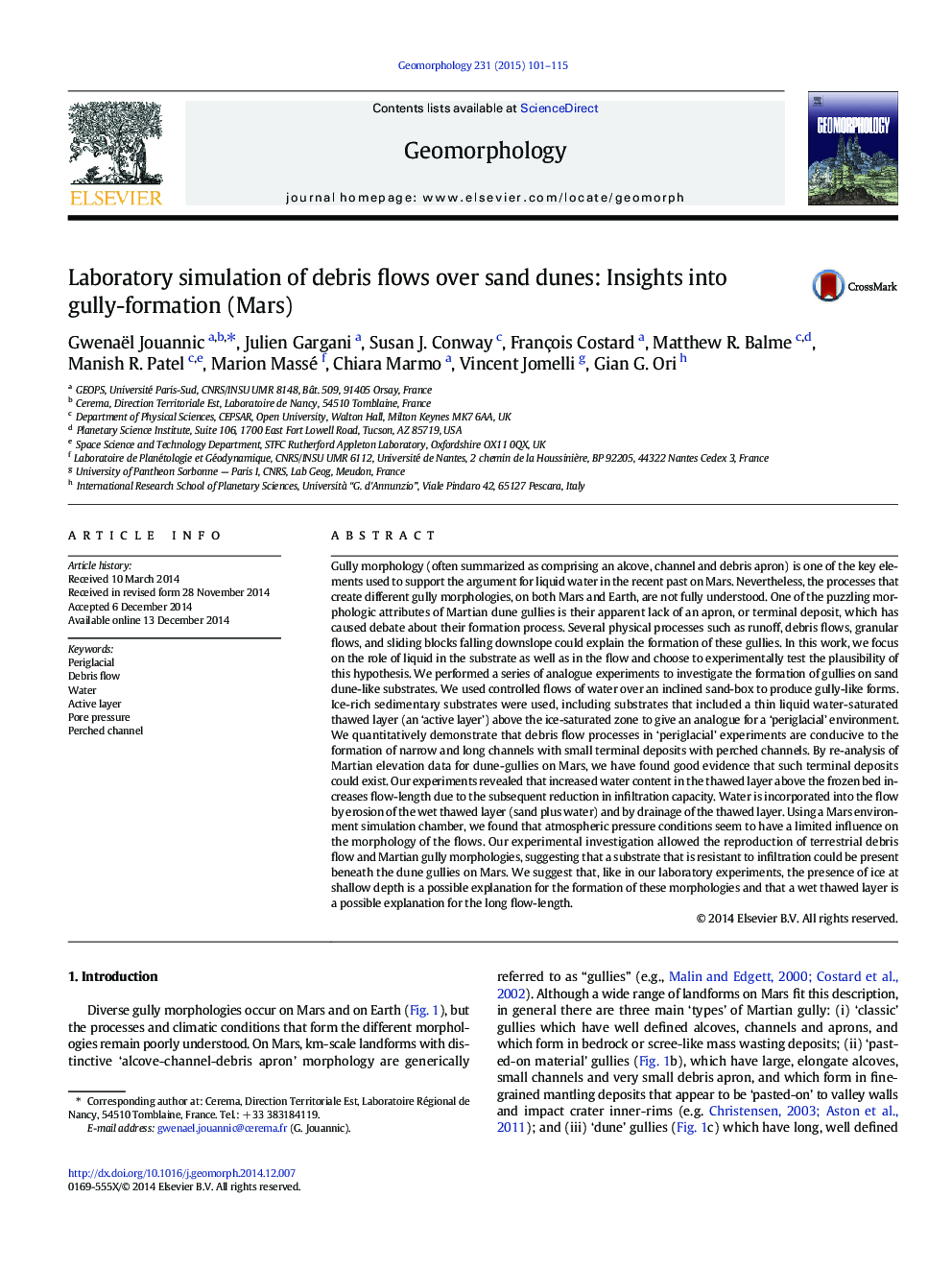| کد مقاله | کد نشریه | سال انتشار | مقاله انگلیسی | نسخه تمام متن |
|---|---|---|---|---|
| 4684323 | 1635418 | 2015 | 15 صفحه PDF | دانلود رایگان |
• We observed gullies on Martian dunes with small final deposits and perched channels
• We performed experiments to investigate the formation of gullies on sand dunes
• Our results revealed that water content in the thawed layer influences flow-length
• Atmospheric pressure seems to have a limited influence on the morphology
• Our study highlights the role of post-emplacement degradation of gully morphology
Gully morphology (often summarized as comprising an alcove, channel and debris apron) is one of the key elements used to support the argument for liquid water in the recent past on Mars. Nevertheless, the processes that create different gully morphologies, on both Mars and Earth, are not fully understood. One of the puzzling morphologic attributes of Martian dune gullies is their apparent lack of an apron, or terminal deposit, which has caused debate about their formation process. Several physical processes such as runoff, debris flows, granular flows, and sliding blocks falling downslope could explain the formation of these gullies. In this work, we focus on the role of liquid in the substrate as well as in the flow and choose to experimentally test the plausibility of this hypothesis. We performed a series of analogue experiments to investigate the formation of gullies on sand dune-like substrates. We used controlled flows of water over an inclined sand-box to produce gully-like forms. Ice-rich sedimentary substrates were used, including substrates that included a thin liquid water-saturated thawed layer (an ‘active layer’) above the ice-saturated zone to give an analogue for a ‘periglacial’ environment. We quantitatively demonstrate that debris flow processes in ‘periglacial’ experiments are conducive to the formation of narrow and long channels with small terminal deposits with perched channels. By re-analysis of Martian elevation data for dune-gullies on Mars, we have found good evidence that such terminal deposits could exist. Our experiments revealed that increased water content in the thawed layer above the frozen bed increases flow-length due to the subsequent reduction in infiltration capacity. Water is incorporated into the flow by erosion of the wet thawed layer (sand plus water) and by drainage of the thawed layer. Using a Mars environment simulation chamber, we found that atmospheric pressure conditions seem to have a limited influence on the morphology of the flows. Our experimental investigation allowed the reproduction of terrestrial debris flow and Martian gully morphologies, suggesting that a substrate that is resistant to infiltration could be present beneath the dune gullies on Mars. We suggest that, like in our laboratory experiments, the presence of ice at shallow depth is a possible explanation for the formation of these morphologies and that a wet thawed layer is a possible explanation for the long flow-length.
Journal: Geomorphology - Volume 231, 15 February 2015, Pages 101–115
